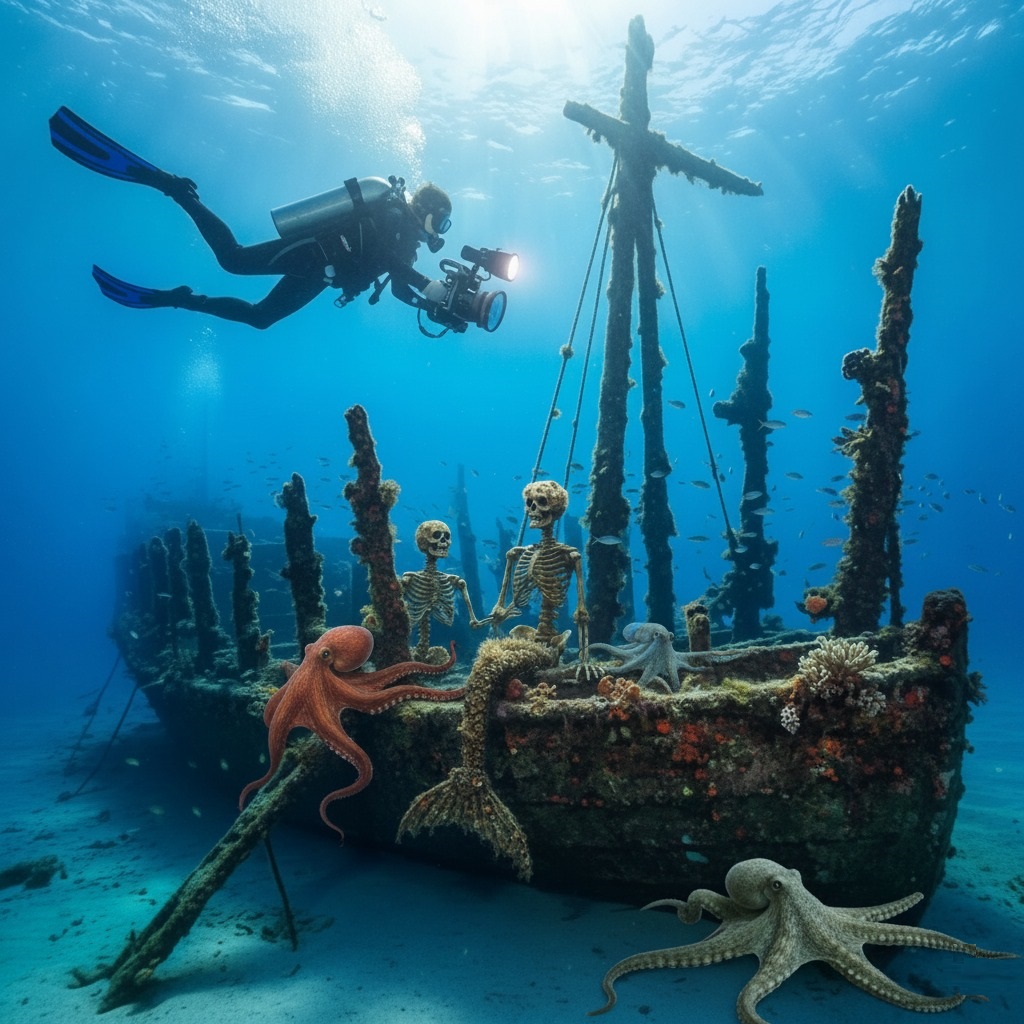The Sunken Secrets of the Truk Lagoon

The year is 2024. Dr. Aris Thorne, a marine archaeologist known for his unconventional approach, adjusted his diving mask. Below him, the impossibly clear waters of Truk Lagoon – now officially Chuuk Lagoon – shimmered, a deceptive veil over a history both tragic and profound. For decades, this Micronesian paradise had guarded its secrets, the resting place of countless vessels, victims of Operation Hailstone in 1944. But Aris wasn’t after a Japanese freighter today. He was chasing a whisper, an anomaly in the sonar readings, a ghost story whispered among local fishermen: a pre-war vessel, much older, seemingly out of place.
His dive team, a mix of seasoned professionals and enthusiastic students, descended. The sunlight, a golden sieve, illuminated the vast underwater landscape. And then, it emerged from the cerulean depths – not a battleship, but a much humbler wooden ship, its form hinting at an age far predating the steel behemoths of WWII. It was covered in a riot of coral and barnacles, a living museum of the deep. This wasn’t just a shipwreck; it was an archaeological time capsule.
As Aris drew closer, his breath hitched. On the decaying deck, three human skeletons sat in an eerie tableau. One, unmistakably, had a crude, yet artfully crafted, mermaid tail fashioned from what looked like ancient metal and interwoven fibers. This was no ordinary WWII casualty. These were deliberate arrangements, almost artistic. And then, from the shadows, three large octopuses emerged, their intelligent eyes observing the intruders, their tentacles gracefully exploring the ship’s timbers, almost as if they were guardians of this bizarre assembly.
“Log entry: Truk Lagoon, Wreck Site designation ‘Siren’s Rest’,” Aris narrated into his comms. “Preliminary assessment indicates a vessel possibly late 19th or early 20th century, possibly a schooner or a small cargo ship. Unprecedented discovery of three articulated human skeletons on deck, one with what appears to be a fabricated mermaid prosthesis. Local marine life, specifically Octopus vulgaris specimens, exhibiting unusual territorial behavior around the remains.”
Back on the research vessel, Dr. Lena Petrova, a bioarchaeologist, examined the recovered drone footage. “The bones are well-preserved, despite the ocean’s relentless assault,” she mused. “But the mermaid tail… it’s not a natural formation. Someone went to great lengths to create that. Why?”
The ensuing months saw a flurry of activity. Dendrochronology dated the ship’s timbers to around 1890-1910. Artifacts meticulously brought to the surface – rusted tools, fragments of ceramics, a tarnished brass locket – told a story of hardship and perhaps, ingenuity. The locket contained a faded photograph of a young woman, her face obscured by age, but her eyes held a spark of defiant joy.
Lena’s analysis of the skeletons was even more revealing. The ‘mermaid’ skeleton showed clear signs of a severe lower limb deformity or amputation, consistent with someone who might have sought such a prosthetic. The other two skeletons were male, one considerably older, the other younger, suggesting a family unit or close companions. Isotope analysis pointed to diets consistent with long-distance sea travel, likely from somewhere in the Pacific or Southeast Asia, ending their journey tragically in what would become the Truk Lagoon.
Aris pondered the implications. Was this a family of castaways, seeking refuge on the ship? Did the young woman, perhaps ostracized for her condition, find acceptance and even reverence from her companions, who crafted her a mythical form in death? Or was this a deliberate, symbolic burial, a testament to a unique cultural practice lost to time, perhaps influenced by ancient Pacific legends of sea spirits and shapeshifters?
The octopuses, too, became part of the mystery. Local legends spoke of ancient spirits manifesting as cephalopods, guardians of sacred sites. Was their presence a mere ecological coincidence, or a deeper, symbolic connection to the souls that rested below?
The Sunken Secrets of the Truk Lagoon had yielded more questions than answers. It was a poignant reminder that history isn’t just about grand battles and empires; it’s also about individual lives, their struggles, their beliefs, and their eventual embrace by the deep. As Aris looked out over the lagoon, the surface calm and inviting, he knew this was just the beginning. The ocean, the ultimate archivist, still held countless untold stories, waiting for the right moment, and the right archaeologist, to bring them to light.
